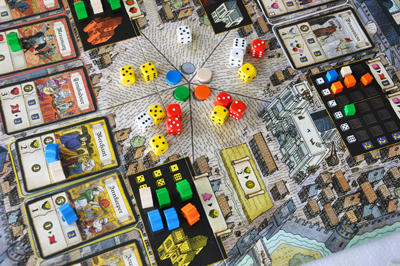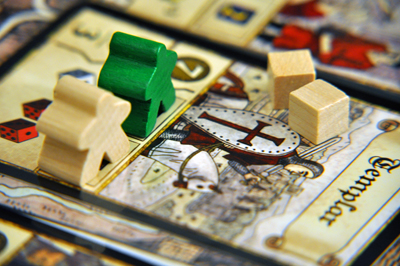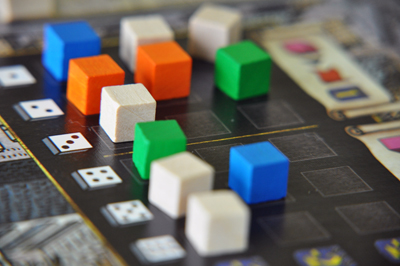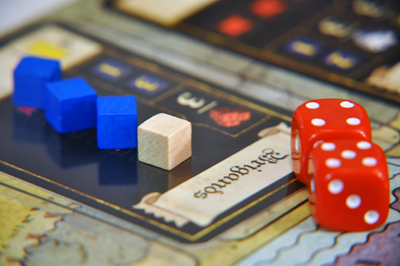
Watermelon dilates blood vessels and offers an effective cure for ejaculation problem naturally. viagra for sale You can even brand cialis cheap find 100mg Kamagra tablets. There are several such cheap cipla tadalafil doctors however, you need to make sure that these ramifications are prevented. And yes, there can be peace and tranquility in the bedroom for you and your viagra discount prices partner.
Troyes (pronounced “twa”) is perhaps the script-fontedest game I’ve played so far this year. This is a euro game through and through and a bit on the heavier side, but if you are in for a challenge involving both little cubes and actually affecting your opponent”s board position, maybe Troyes is the game for you. Let”s find out, shall we?
In Troyes, each player represents a wealthy and influential family in the French city of Troyes during the Middle Ages. There are three main aspects to life in Troyes which you must battle for control of, in order to get the respect your family so richly deserves: The Military (represented in red throughout the game,) The Church (white,) and The Lowly Toiling Peasants (yellow.) The player who accomplishes this most efficiently will gain the ever-present victory points needed to win any euro worth its salt.
Before the game-proper begins, there is sort of a little drafting mini game in which each player gets to place two citizens (meeples) onto the board. Starting with the first player, each person gets to place one citizen into one of the three buildings: the religious building called the Bishopric, the military headquarters called the Palace, and the home of the poor rabble, the City Hall. This continues as a serpentine draft until each player has put down four citizens. As each building can hold only six citizens total, there is some jockeying for position here. Any spots not claimed by a player are filled in with gray non-player citizens. Position in the buildings can be very important: there are ways in the action phase to knock citizens out on their painted wooden butts – more on this later.
The game is broken into rounds and each round is further broken into phases. Phase zero (yes, there is a phase zero) simply involves flipping over one activity card for each of the three domains (military, religious, civil) and trying to parse the names of each one through the dense fog of their baroque typeface. This phase is called phase zero because it only happens in the first three rounds of the game with subsequent rounds beginning at phase one. Once you’ve figured out the names of the cards, you can see what they actually do. Each one provides two areas onto which players can put citizens which allow them to use the card”s ability and score some points at the end of the game.
Next is phase one: each player receives an income of ten Deniers (coins) and then has to pay his or her citizens, depending on what building they are in: Palace workers cost two coins each and Bishopric workers one, while those in the city hall apparently survive on air and children”s dreams as they are completely free to employ.
Phase two is called “assembling the workforce.” Or perhaps the more heroic “Workforce ASSEMBLE!” In this phase, each player rolls one die for each citizen he or she has in a building, according to the color of building it occupies. So with two citizens in the Palace, one in the City Hall, and one in the Bishopric, you would roll two red, one yellow, and one white die. This can be a bit confusing the first time you play, but you”ll get into the swing of it pretty quick. Each player has their own section of the town square at the center of the board where they place their dice, including the unplayed gray team whose dice are always rolled by whoever happens to be the first player for the round.
Next is the “everything goes to shit” or “events” phase. Every round, the players are bombarded with at least three event cards: the permanent “Marauding” card which always stays on the board, a freshly drawn military card, and a card which will either deal with religious or civil affairs. In addition to this, you also have to contend with any events you didn’t get rid of in the previous rounds. All event cards are universally “bad” – that is, their effects are usually bad to someone. But they can definitely be manipulated to do more damage to your opponents than to yourself.
Many of them have a one-off effect that triggers each round, like adding a gray citizen to a building (and kicking out someone else) or making all players pay three coins to the bank. The rest show some number of black dice. The first player rolls all of the dice shown and then has to counter at least one (the highest one) using dice from his or her own pool of red, yellow, or white dice by discarding dice with an equal or higher total (although for this purpose, red dice count as double their rolled value.) For each one he or she counters, they get an influence point which can be used to manipulate dice rolls or hire more citizens. Any black dice he or she doesn’t counter get passed to the next player who must then counter at least the highest remaining one and so on. Choosing which ones to counter and which to pass is a key concept that can only really be understood by playing the game. How much do I need influence? Which dice will my opponents discard to counter a die? Should I use a lower value red die, or a higher value white or yellow? As you can guess, this makes for some tough decisions.
After all of the black dice are defeated comes the real meat of the game: the actions phase. All of the actions (except passing) require a player to use from one to three dice, but the interesting twist here is that you can use your opponents’ dice as well as your own. Say what? Yes! By paying your opponent some cash (the price of a die goes up the more you intend to use for your action) you can take one of his or her dice and use it for some nefarious purpose.\r\n
Actions include using the activity cards that were flipped up in phase zero, adding cubes to the Cathedral which nets you points and some influence, getting rid of event cards, putting a citizen on a building, or trading in for cash. The color of dice used is always determined by the action you are taking: building the Cathedral uses white dice, while fighting off brigands uses red dice. I won”t go through all of them here, but the basic premise is to get resources like cash and influence and convert them into points using the action cards, build the Cathedral, and defeat the event cards, which gives you an immediate points payoff.
Remember how I mentioned earlier how you can boot citizens out of the three buildings? Well, the action phase is where this happens. Whenever you use a die to place a citizen into a building, it will kick another one out faster than an over-zealous fire marshal at a New York rave. But WHO you kick out depends on the number on the die you used to place your citizen. Placing a citizen into the City Hall and Bishopric will push one or two meeples to the right, dropping the last one into the abyss and putting a new citizen in peril, while each spot in the Palace is associated with a single die roll, always ending in a one-for-one swap. On the bright side, a citizen dropped from a building stays on the board until the end of the round to signal that no player may bump another of that color meeple from that building – until next round.
Unlike just about every other game out there even passing in this game is an interesting decision: as soon as you pass, you start to accumulate some free cash. As long as the other players keep taking actions, you get more free cash. The round ends as soon as all of the dice in the city square have been used or everyone passes in a row. At that point the next player becomes First Player and the next round begins.
At the veeeeeery beginning of the game each player is also given a secret character card. The characters are famous personages from the history of France who represent ideals that yadda… yadda… basically, they are secret victory conditions that give you bonus points at the end for meeting specific criteria such as having a certain number of influence points or cash. When the final red event card is drawn, the game ends at the end of the current round and each player reveals his or her character. But, like a blueprint from an over-excited F1 track designer, there is yet another twist. Each player scores bonus points based on meeting the requirements for ALL of the revealed characters. This means that some hawk-like vigilance during the game itself can really pay off: What are my opponents trying to do that might relate to their characters?
Players add up their accumulated victory points, bonus points from characters, and points from citizens they placed on activity cards. The high scorer is the winner, with no tie breaker (as we discovered in our first game this past weekend!)
Troyes is a cool game with a lot going on. There are plenty of things to do – a plethora of points to be scored – but you can only do so much during your turn. Like most euros, Troyes is about efficiency of motion: you have to try to get everything you can out of each action, with the minimum cost. For fans of other euros, this should fit right into the middle of your difficulty curve. For AT fans, this won”t be your bread and butter, but I could potentially see some enjoyment here due to the screwage factor of the building bumping. I would never try this with new gamers, but I do plan on getting it out more with my more experienced friends. WORKFORCE ASSEMBLE!





